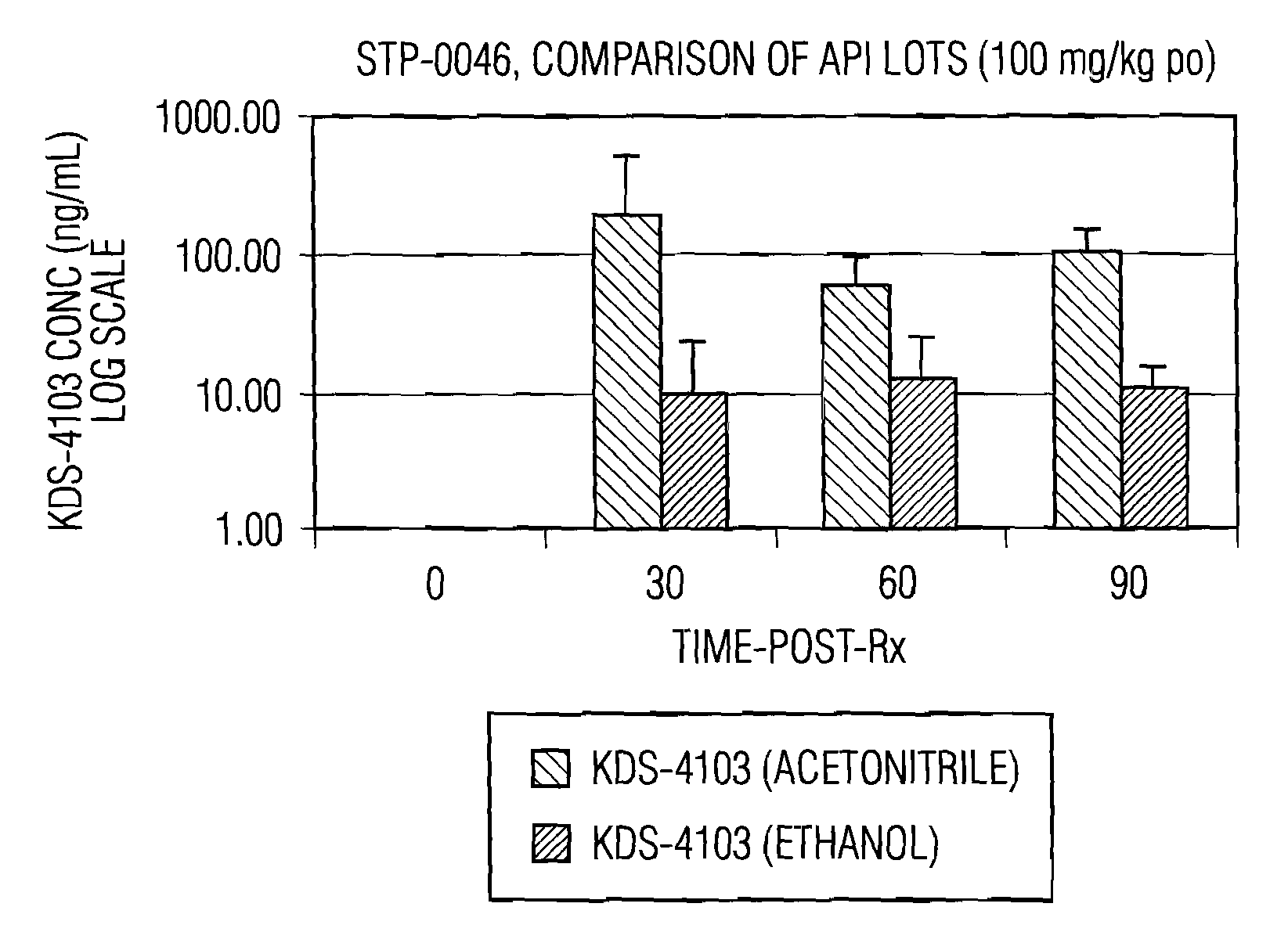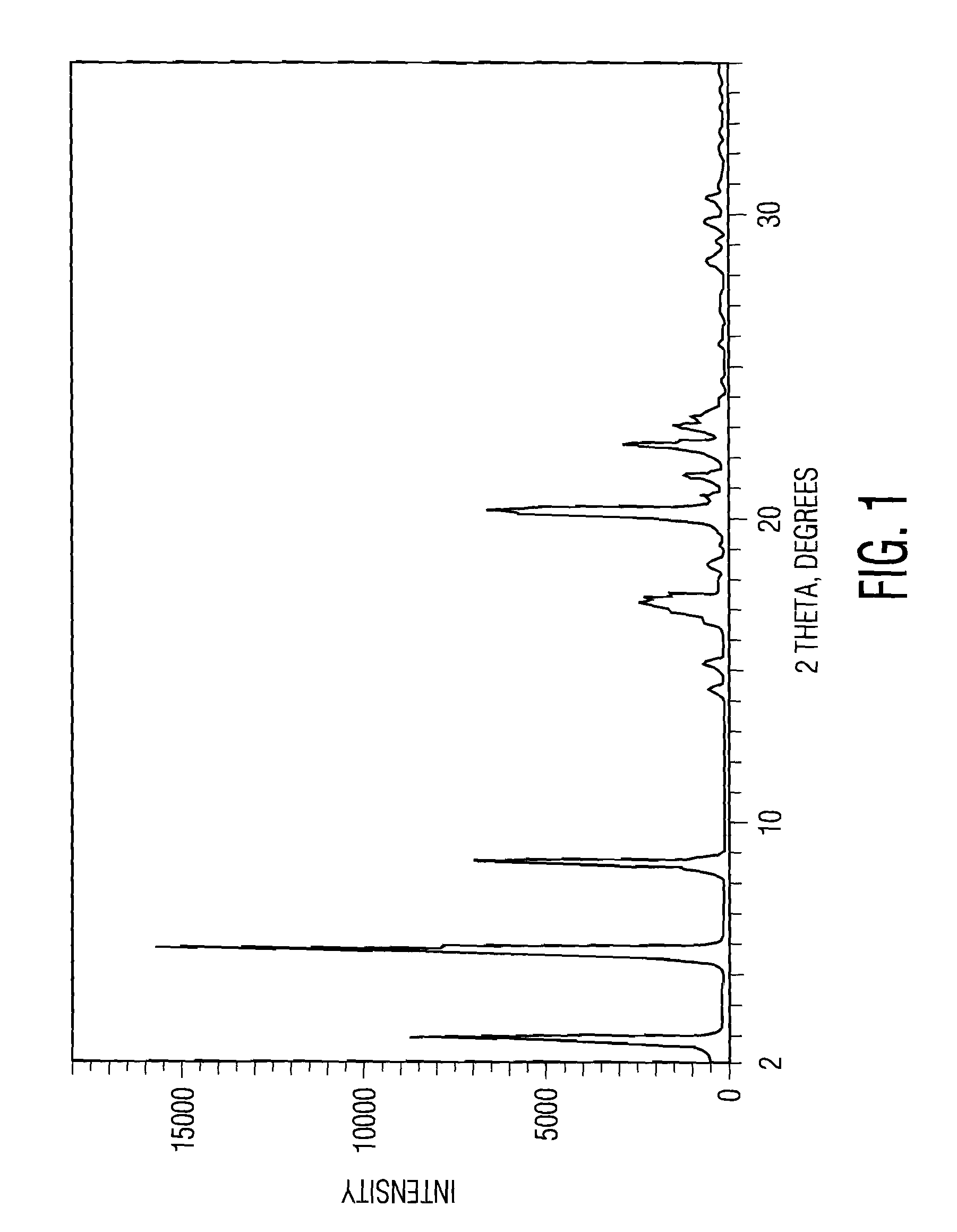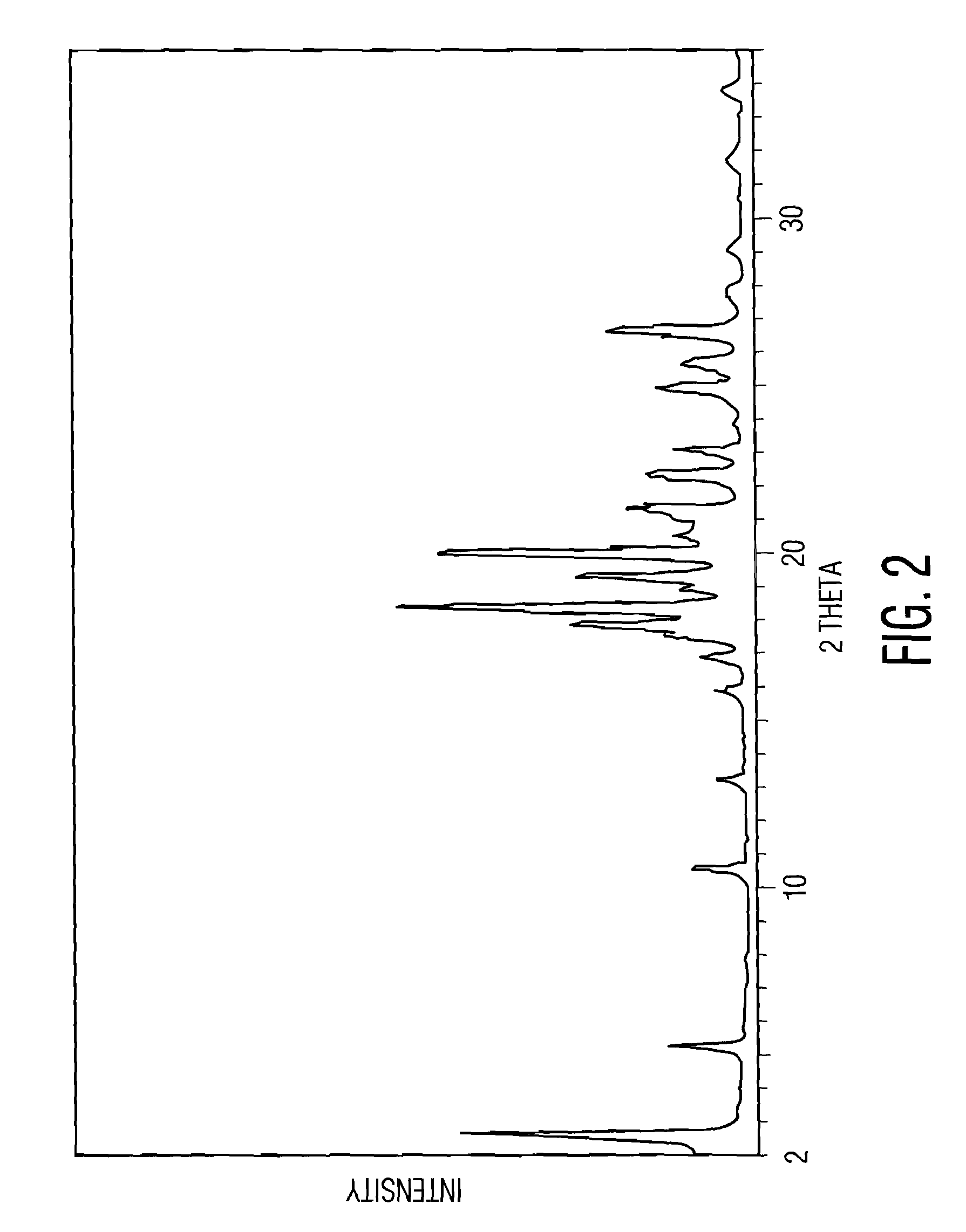Synthesis, polymorphs, and pharmaceutical formulation of faah inhibitors
a technology of faah inhibitors and polymorphs, which is applied in the field of synthesis and pharmaceutical formulation of polymorphs of faah inhibitors, can solve the problems of increasing the levels of fatty acid amides
- Summary
- Abstract
- Description
- Claims
- Application Information
AI Technical Summary
Problems solved by technology
Method used
Image
Examples
example 1
Synthesis of 3-Bromobenzamide using Sodium Perborate
[0084]To a 2-liter round bottom flask was added 3-bromobenzonitrile (138 g, 0.76 mol, 1 equivalent) followed by 1,4-dioxane (830 mL), water (830 mL) and sodium perborate tetrahydrate (322 g, 2.1 mol., 2.75 equivalents). The reaction mixture was heated to 80° C. for 16 hours. The clear solution was cooled to room temperature, and diluted with water (4 L). The desired product precipitated during the addition of water, and was filtered and dried under high vacuum to yield the product as a white solid (1117.52 g, 0.59 mol.). The filtrate was cooled to 0° C. and stored overnight at 0° C. A second crop of product was collected by filtration (12.2 g., 0.06 mol). 3-Bromobenzamide was obtained as a white crystalline solid (129.7 g 0.65 mol., 86%).
example 2
Synthesis of 3-Bromobenzamide using Hydrogen Peroxide
[0085]To a 5 L 3-neck round bottom flask was added water (900 mL) followed by NaOH (66 g, 1.65 mol, 1 equivalent) and MeOH (900 mL). The reaction mixture was cooled to approximately 0-10° C. and 3-bromobenzonitrile (300 g, 1.65 mol) was added. The reaction mixture was stirred vigorously and H2O2 (30% in water, 500 mL, 82.45 mol, 2.4 equivalents) was added. The rate of addition was adjusted to maintain a reaction temperature below 25° C. Upon completion of the addition of the hydrogen peroxide, the reaction mixture was stirred for 2 hours at 10° C. The reaction mixture was then warmed to room temperature and stirred for an additional 16-18 hours. The reaction mixture was filtered and the filtercake was washed with water (3×500 mL). The product was dried under vacuum at 40-45° C. to obtain a white solid (302.04 g, 0.151 mol, 92%).
example 3
Synthesis of 3′-Hydroxybiphenyl-3-Carboxamide on a Laboratory Scale
[0086]To a 5 L 3-neck round bottom flask was charged with 3-bromobenzamide (128.29 g, 0.64 mol), EtOH (1274 mL), PdCl2 (0.588 g, 3.3 mmol, 0.005 equivalents), 3-hydroxyphenyl boronic acid (93 g, 0.67 mol. 1.05 equivalents), K2CO3 (177 g, 1.28 mol, 2 equivalents) and nBu4NBr (10.3 g, 0.032 mol, 0.05 equivalents). The reaction mixture was stirred at room temperature for approximately 16 hours. Upon completion of the reaction, a 10% aqueous HCl solution was added to the reaction mixture until the pH reached 1-2. The reaction mixture was extracted with EtOAc. The organic phases were combined and filtered through celite. The organic solvents were then removed under vacuum to obtain an orange solid. The solid was dissolved in acetone (200-300 mL) and water (1700 mL) was added. The reaction mixture was stirred for 1 hour at approximately 5-10° C. The product was collected by filtration as a white solid and dried under vacuu...
PUM
| Property | Measurement | Unit |
|---|---|---|
| particle size | aaaaa | aaaaa |
| particle size distribution | aaaaa | aaaaa |
| particle size | aaaaa | aaaaa |
Abstract
Description
Claims
Application Information
 Login to View More
Login to View More - Generate Ideas
- Intellectual Property
- Life Sciences
- Materials
- Tech Scout
- Unparalleled Data Quality
- Higher Quality Content
- 60% Fewer Hallucinations
Browse by: Latest US Patents, China's latest patents, Technical Efficacy Thesaurus, Application Domain, Technology Topic, Popular Technical Reports.
© 2025 PatSnap. All rights reserved.Legal|Privacy policy|Modern Slavery Act Transparency Statement|Sitemap|About US| Contact US: help@patsnap.com



